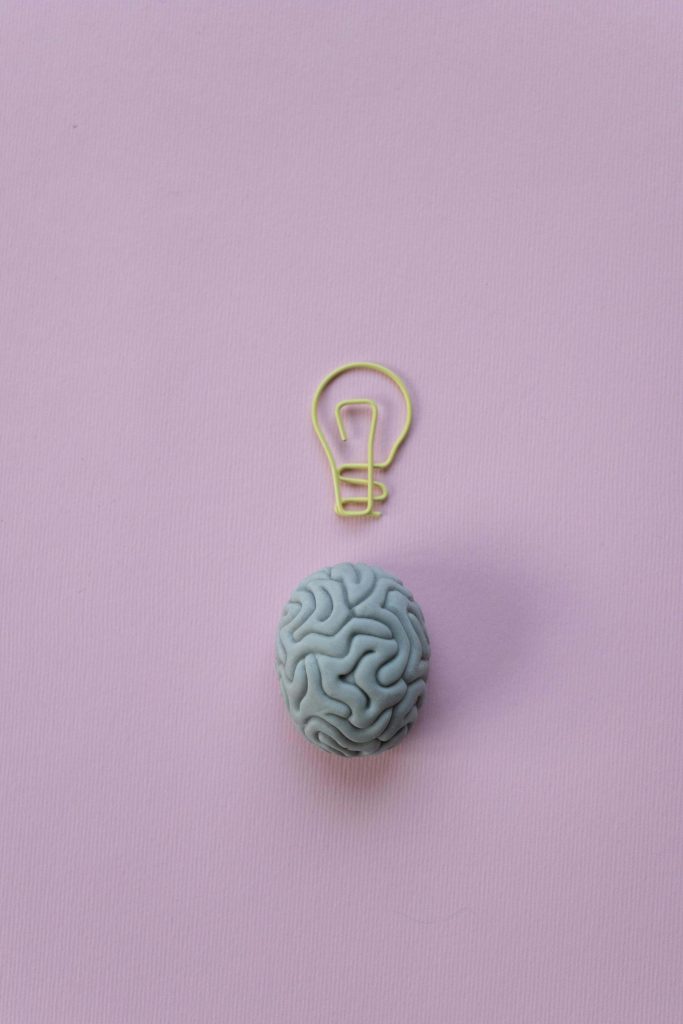How to Manage Feeling Overwhelmed with ADHD Brain
Feeling overwhelmed can be a frequent struggle for kids with ADHD, and it often leaves parents of kids with ADHD searching for ways to help. As a school psychologist who has conducted hundreds of ADHD evaluations, I understand the complexities that children like yours face everyday. In this blog post, we’ll discuss exactly what the ADHD brain is, what triggers overwhelm, how it manifests in children, and practical, compassionate strategies you can use to guide and support your child.

Understanding ADHD and the ADHD Brain
As mentioned in many blog posts before, ADHD, or Attention-Deficit/Hyperactivity Disorder, is recognized by the American Psychiatric Association as a neurodevelopmental disorder. It is characterized by a consistent pattern of inattention, hyperactivity, and impulsivity that significantly interferes with functioning or development. These behaviors must be more severe than typically observed in individuals at a comparable level of development to be considered diagnostic of ADHD.
We can read descriptions like that and understand what ADHD is, but you may still wonder what’s really happening inside the brain of someone with ADHD.
Neuroscience shows us that ADHD isn’t a matter of willpower—it’s a matter of wiring. The ADHD brain displays unique neural activity, particularly in areas responsible for attention, impulse control, and executive functions. Compared to neurotypical brains, those with ADHD may have differences in neurotransmitter activity (like dopamine and norepinephrine), which are essential for attention and planning. This neurological variance can explain why children with ADHD react differently to stimuli and challenges, showing us that their experiences are not just behavioral but deeply rooted in their brain’s structure and function.
Visualizing the ADHD Brain: Understanding Your Child’s Unique Challenges
Imagine that your child’s brain is a busy airport control tower where air traffic controllers are necessary for managing the smooth flow of airplanes on runways and in the air. In a neurotypical brain, this control tower operates with precision, efficiently managing incoming and outgoing flights, ensuring each plane has a clear path and accurate timing for takeoff and landing.
Now, envision your child’s ADHD brain as a control tower where the communication systems are slightly off—radio signals don’t always come through clearly, and the radar may be fuzzy every now and then. The air traffic controllers (neurotransmitters like dopamine and norepinephrine) struggle to maintain the usual flow of planes. They might send a plane out too early or too late, or miss a plane that’s ready for landing. This results in planes (thoughts and impulses) circling in the air longer than necessary or rushing onto the runway too quickly, which leads to a chaotic and unpredictable flow.
For your child, this chaotic control tower might make it hard to follow a conversation, complete a sequence of tasks, or sit still during class—their thoughts and actions are like planes trying to land without clear instructions. Understanding this can help you see why your child isn’t just “acting out” or ignoring rules. They are dealing with a brain that processes information differently.
Thank you for reminding me! I’ll make sure not to include semicolons in future responses. Here’s the revised section without them:

Navigating Overwhelm: When ADHD Sensory and Emotional Challenges Strike
When children with ADHD become overwhelmed, it’s like a sensory and emotional storm erupting in their minds. The brain of a child with ADHD processes sensory inputs—like sound, light, and touch—differently. Sometimes, what seems like ordinary background noise or bright lights can escalate into sensory overload, leading to significant discomfort and distress. This overstimulation can be physically overwhelming and it often triggers intense emotional responses as well.
For kids with ADHD, managing these overwhelming sensations involves wrestling with their own brain’s executive functioning challenges.
Executive functions are the mental skills that include tasks like flexible thinking, initiating tasks, controlling emotions, planning and prioritizing, and self-monitoring. These are often areas where children with ADHD struggle the most. For instance, in the midst of sensory overload, a child might find it nearly impossible to start a simple task, switch from one activity to another, or gauge the appropriateness of their emotional response to the situation.
Bright lights and loud environments can exacerbate these difficulties, leading to a snowball effect where emotional overwhelm increases, which in turn makes it even harder to manage their executive functioning skills. This chain reaction can result in the avoidance of tasks that seem too challenging or the expression of intense emotions that might seem disproportionate to the situation.
How Overwhelm Manifests for Kids with ADHD: At Home and School
Understanding how ADHD affects children both outside of school and within educational settings is key to supporting them effectively, especially because you’re mostly involved in the “outside of school” part. For kids with ADHD, everyday environments and situations can often trigger overwhelm, which can manifest in various, sometimes unexpected ways.
Outside of School: In everyday settings like a grocery store, the bombardment of sights, sounds, and the need to make choices can quickly lead to sensory overload. This can lead to a cycle of procrastination. Faced with seemingly simple daily tasks, children with ADHD might delay starting them because they feel too daunting or because they’re struggling to prioritize what to do first.
The same can be said for completing homework. What might look like just putting off homework is actually a cycle that can affect all aspects of life, from getting dressed in the morning to completing chores. The demands of daily life (like following a routine or keeping track of personal belongings) can become significant stressors and drastically increase feelings of anxiety and inadequacy.
At School: The school environment can also intensify these challenges. The need to switch between tasks and manage multiple assignments can trigger a cycle of procrastination, where starting any task feels overwhelming. This often leads to unfinished work and mounting responsibilities, which can sometimes make children feel a lot of shame. They might internalize negative feedback and start to feel like they’re not just struggling with tasks but are fundamentally less capable than their peers.
In both scenarios, it’s crucial for parents and educators to recognize these signs and understand that these behaviors are not acts of defiance or laziness. They are manifestations of the ADHD brain trying to cope with its unique challenges. By adopting strategies that help manage these triggers and providing consistent support, we can help children with ADHD navigate their world with more confidence and less distress, reducing feelings of shame and building a more positive self-image.

Tailored Strategies to Manage ADHD Overwhelm
Building on what we’ve already explored about the manifestations of ADHD in various settings, it’s clear that managing overwhelm is essential for helping children navigate both academic and everyday environments. Some strategies for reducing overwhelm may already be familiar as they are often recommended for managing anxiety and improving focus. Let’s dive into both immediate and long-term tactics that can help your child feel more in control.
Immediate Relief from Overwhelm
Take Deep Breaths
Encouraging your child to engage in deep breathing exercises can provide a quick reset to their emotional and physical state, offering a moment of calm amidst a storm of overstimulation.
Quick Physical Activity
Simple physical activities, such as a brief set of exercises, can significantly dissipate stress and refocus energy, proving to be an essential tool for immediate relief.
Long-Term Management Strategies
Regular Exercise
Maintaining a routine of regular physical activity can dramatically improve concentration and emotional well-being. This strategy is frequently mentioned across various recommendations for its broad benefits, including reducing anxiety and enhancing mood.
Organized To-Do Lists
Creating organized to-do lists, such as a visual cleaning checklist, can help manage daily tasks more effectively. These tools not only break down overwhelming tasks into manageable steps but also incorporate structure into everyday activities. For more insights, check out our blog post on ADHD cleaning checklists.
ADHD-Specific Seating
Utilizing ADHD-specific seating arrangements can help reduce sensory overwhelm at school or during homework time by providing a stable, focused environment for your child. We also have a blog post dedicated to ADHD seating solutions if you want to learn more.
ADHD Accountability Apps
Implementing ADHD accountability apps can provide structure and reminders, helping your child stay on track with their tasks and responsibilities. These apps are designed to enhance time management and organizational skills through user-friendly interfaces that cater to the unique needs of individuals with ADHD. You can learn more about these tools in our blog post on ADHD accountability apps.

Utilize White Noise
Integrating white or brown noise through specialized apps can enhance focus by drowning out distracting background noise, a technique supported by research on sensory sensitivities in children with ADHD.
Noise-Canceling Headphones
Particularly in noisy environments, noise-canceling headphones can be invaluable in helping your child maintain concentration and reduce sensory overload.
Enhancing Executive Functions
Our academic coaching program, EXCEL, is a prime example of how targeted interventions can improve executive functioning skills, vital for academic performance and daily life. By focusing on specific areas such as task initiation and emotional control, EXCEL helps students excel by harnessing their strengths and addressing their challenges. Similarly, parents can integrate exercises that boost these skills into everyday situations. For instance, turning routine shopping trips into an opportunity for your child to practice budgeting or planning can subtly enhance these key skills.
When to Seek Professional Guidance
If your child frequently faces overwhelming situations despite these strategies, or if you notice persistent challenges that disrupt their daily life, it may be time to seek professional advice. A psychologist or an ADHD specialist can offer more personalized strategies and support, ensuring your child receives the guidance they need to thrive.
In this post, we’ve reviewed a variety of practical strategies designed to help children with ADHD manage the overwhelming sensations they often face, both at school and in everyday life. From immediate relief techniques like deep breathing and quick physical exercises to more sustained approaches such as regular physical activity, structured to-do lists, and innovative tools like ADHD accountability apps, these methods can significantly aid your child in navigating their unique challenges.
Keep in mind that while these strategies offer valuable support, each child’s experience with ADHD is distinct, and continuous adaptation and support may be required. If challenges persist despite your best efforts, it might be beneficial to seek professional advice to tailor specific strategies that better meet your child’s needs.
For more insights, tips, and resources on supporting your child with ADHD, subscribe to the blog below!







